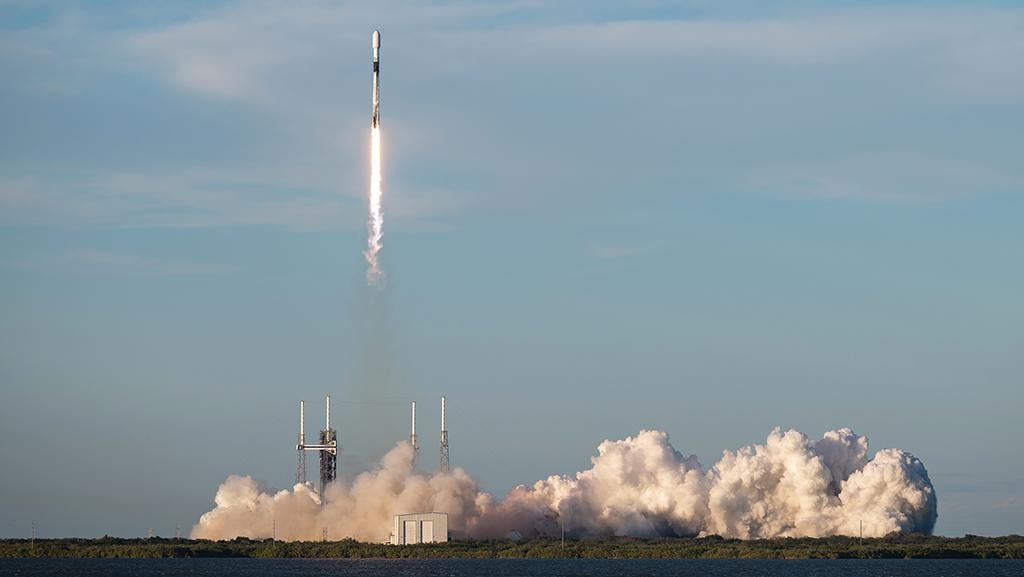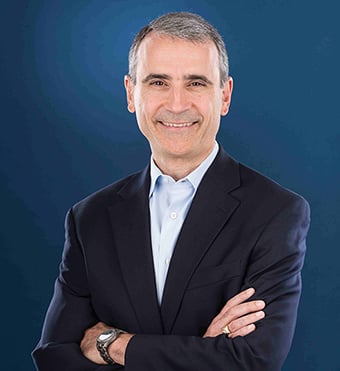This article is published in Aviation Week & Space Technology and is free to read until May 08, 2024. If you want to read more articles from this publication, please click the link to subscribe.

The Aerospace Corp. used “a new object-oriented modeling process and a python-based approach to reduce analytical timelines” to support the launch of two satellites for the Missile Defense Agency and four for the Space Development Agency lofted in February under the National Security Space Launch Program by SpaceX from Cape Canaveral SFS.
Space’s shifting strategic environment is reshaping The Aerospace Corp., the only U.S. government-backed research and development center committed exclusively to space enterprise. CEO Steve Isakowitz talked to Senior Editor Guy Norris about the company’s transformation.

AW&ST: Why has The Aerospace Corp. moved headquarters from California to Chantilly, Virginia? The customer we’re dealing with has changed a lot over the 64 years since we were created. It used to be all be about Los Angeles and the urgency to get the first ICBM to work, and it was the birthplace of the [National Reconnaissance Office]. There was a very powerful reason why we were in L.A., and there’s still a powerful reason why we should stay here. But things have really changed over the past 3-5 years. Probably the single biggest thing has been creation of the Space Force as well as the creation of the [Space Development Agency (SDA)], the Space Rapid Capabilities Office, the Space Warfighting Analysis Center and the creation of the executive role of assistant secretary of the Air Force for space acquisition—now held by Frank Calvelli. So we’ve seen some big stuff, and a lot of that has really shifted toward Washington and the need to be there.
How have these changes been reflected internally at Aerospace? Internally, we have changed a lot as a company as well. Since my time [began] here as CEO, we’ve gone from a tremendous amount of our work being in L.A. to it now being elsewhere. We now talk about ourselves as being a true national company, where we are now colocated with lots of customers around the country. Our footprint has remained the same in Los Angeles, but growth has occurred everywhere else. And we’ve become very focused on this end-to-end capability. We’ve redefined ourselves. Instead of just being about mission assurance over launch vehicles and getting satellites up in orbit working—which is still super important—we need to work across not just space but in ground and in cyber and the combatant commands. So really, truly end-to-end.
Are you deemphasizing your presence in Los Angeles? No, I don’t want to leave anybody the impression that L.A.’s less important. We have also announced a $100 million investment in Los Angeles because our heaviest labs are here still. A lot of the workforce talent is here, and a lot of aerospace is still here. We’ve got Raytheon around the corner and Boeing just down the street and Northrop Grumman a mile up the street from here. So it’s still the heart of the space industry.
What will the $100 million be spent on? It will be consolidation on our campus, major renovations and upgrades we’re putting into our laboratories. We’re trying to get people to spend more time on the campus. We’re going to have some state-of-the-art capabilities and surroundings so people will want to come here. And we intend to extend that to our other sites as well in terms of what we’re developing here. We have the new building in Colorado Springs. We’re expanding our footprint significantly in Crystal City in Northern Virginia, and we are in Albuquerque, New Mexico; Houston; Huntsville, Alabama; and Utah.
Aerospace is combining its Space Systems Group and its Defense Systems Group, creating a unified organization to support all of Aerospace’s Defense Department customers. Why? We had two parts of our organization that were covering different parts of the Defense Department, so this gives us the ability with one organization to do exactly that. Part of it is focused on speed and agility for this new acquisition environment. It’s the way everyone’s going to be doing business going forward. So how do we take the things we’re learning from these rapid-acquisition organizations and apply it to all of our acquisitions, including the civil side, as well? That’s why we decided to create an organization of excellence focused specifically on this area. You’ve got to cycle faster; you’ve got to react faster. And you think of risk very differently, particularly in proliferated constellations.
What prompted the change? Air Force Secretary Frank Kendall has talked about China, China, China—the threats and the fact we could find ourselves potentially in a conflict situation as early as three years from now. Are we ready? When he put that challenge out there, we jumped on it and said, “Alright, let’s do some of our rapid approaches in this more end-to-end view.” We’ve been working hard to come up with solutions that either can be put up very near-term or more likely . . . make better use of the things that are already out there and better connect things and take advantage of commercial and international to just close the kill chain.
What does this mean in practice? For example, it impacts even the way we check out satellites. SDA comes to us for assistance on that, and in the old days you’d check out each satellite one by one. It’s an extensive effort. But when you’re launching three, four, six, 12, 24 at a time, it’s a totally different mindset. In the old days when I worked launch, you got three years to work it and you were putting a single satellite in space, but now we’re putting up Christmas trees of satellites. Some get pulled off at the last second, some get put on at the last second, and you’ve got to worry about launch vehicles that go down—you have got to be able to move between them.
Has the process sped up with the new-generation launch vehicles? Again, it’s very different. The SpaceX Falcon 9 has an impressive history of many launches. We work with them very differently, because you go off historical information and you’re focused more on margin, and we’ve cut by over 50% how much time we spend on these launches [from what] we’ve done in the past. But we’re probably more confident than we used to be because we’ve got a lot more data to look at. Using AI machine learning, we’re able to see very quickly if we have an issue as these things roll out.
What research on potential applications and implications is Aerospace doing around the SpaceX Starship or Blue Origin New Glenn super-heavy launchers? What’s going to be interesting for us to watch is that there’s been a move toward these highly proliferated small vehicles for good reason. But if you really have the volume and the cost doesn’t really go up, maybe it should go down quite a bit in terms of dollar per pound. It’s quite possible these bigger vehicles will be as cost-competitive against the small ones so that you might get proliferated big satellites at some point. That allows us to open up the in-space services and capabilities of not just what you put in space but the whole issue of refueling and rendezvous and manufacturing from space.
How is Aerospace helping new players, and also SpaceX or Blue Origin, with their super-heavy launchers? We have started to look at the airline industry model and how you go about certifying these vehicles in a way that is more consistent with what we’re seeing happening in the marketplace. How do you create both on-ramping opportunities for new players, which we’re seeing is a key part of the acquisition strategy for [National Security Space Launch] Phase 3, as well as working with the companies when they have failures? There have been quite a few of these—typically the smaller ones—and even Starship. They’re all going through their federal investigations on these failures. Companies need to be smart about what it takes to succeed, but they also have to be just as smart on how to recover from failure. Some, like SpaceX, bounce back quickly. We’ve worked with them quite a bit on how you instrument and how you collect the information. How do you get [to] the root cause? How do you work with the federal investigators and get back up on the launchpad?





